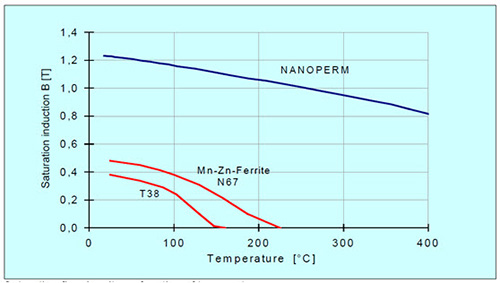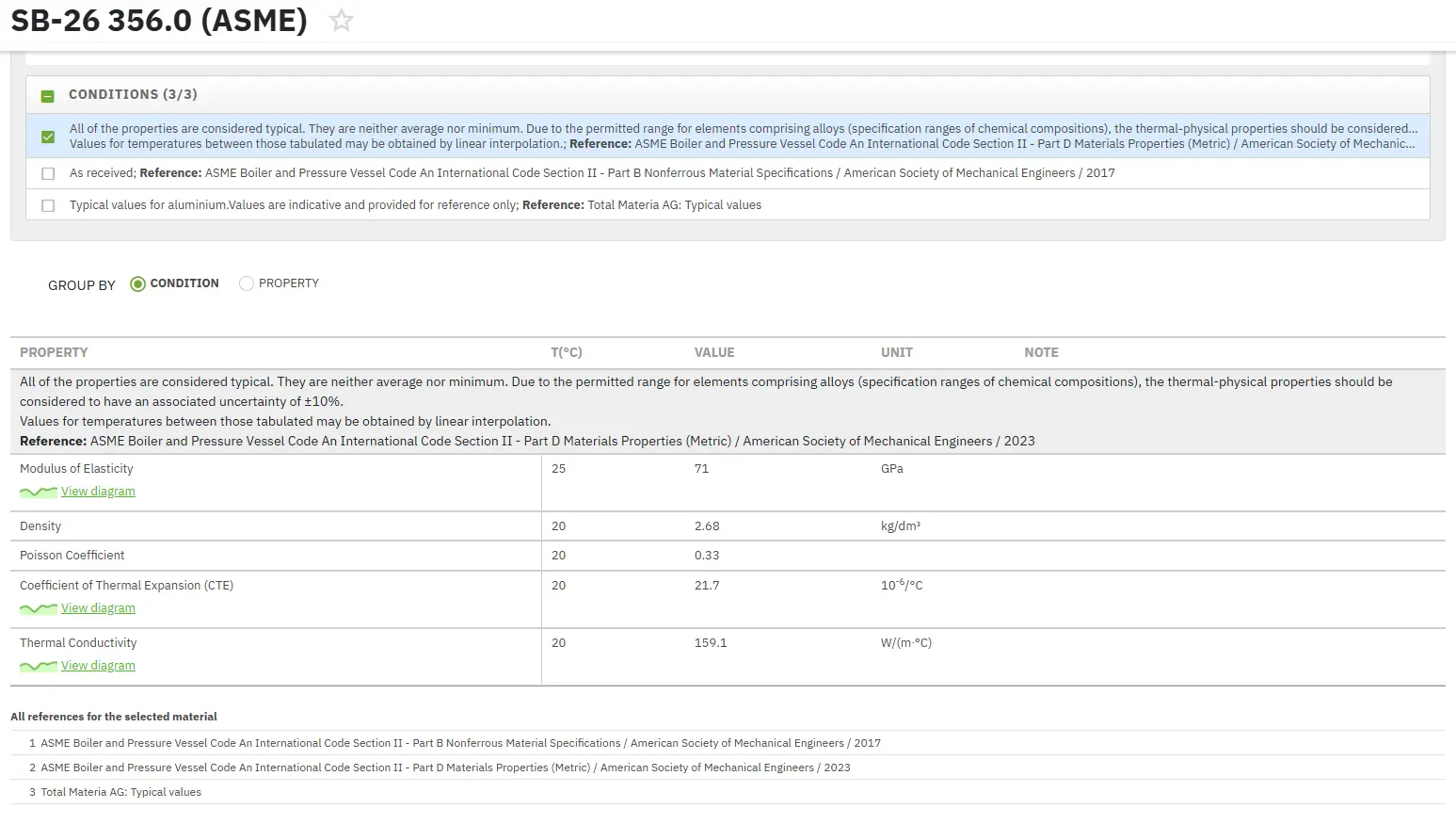Nanoperm alloys
Abstract
Although a relatively recent discovery, nanocrystalline materials are a well studied group of materials which have some specific magnetic applications whilst exhibiting some useful property characteristics also.
Due to a very fine distribution of crystalline grains within the amorphous matrix nanocrystalline alloys display excellent soft magnetic properties.
The discovery of nanocrystalline Fe-based soft magnetic materials is less than ten years old. The first class of such materials was the melt-spun Fe-Si-B alloys containing small amounts of Nb and Cu. The Fe-Si-B-Nb-Cu amorphous phase transforms to a body-centered cubic (bcc) Fe-Si solid solution with grain sizes of about 10 nm during annealing at temperatures above the crystallization temperature.
The presence of small amounts of Cu helps increase the nucleation rate of the bcc phase while Nb retards the grain growth. These "Finemet" alloys provide low core losses (even lower than amorphous soft magnetic alloys such as Co-Fe-Si-B), exhibit saturation induction of about 1.2 T, and exhibit very good properties at high frequencies, comparable to the best Co-based amorphous alloys.
These were first developed in Japan and have stimulated a large amount of research and development worldwide to optimize the magnetic properties. There has been relatively little work in the United States in this area, however.
Amorphous and nanocrystalline materials were recently investigated for applications in magnetic devices such as transformers, inductive devices, etc, which use soft-magnetic materials. The interest in developing nanocrystalline soft-magnetic alloys has dramatically increased during the past few years. Bulk soft-magnetic materials need to have both high induction and permeability, as well as many other non-magnetic features such as mechanical properties, corrosion resistance, etc.
Nanocrystalline soft magnetic alloys can be described in general as TL(1-x)(TE, M, NM)x, where TL denotes a late (ferromagnetic) transition metal element, TE denote an early transition metal element , M is a metalloid, and NM is a noble metal. This composition usually has x < 0.20 i.e. with as much late ferromagnetic transition metals (TL = Co, Ni or Fe) as possible. The early transition metals (TE = Zr, Nb, Hf, Ta, etc.) and metalloids (M = B, P, Si, etc.) are added to promote glass formation in the precursors. The noble metal elements (NM = Cu, Ag, Au, etc.) serve as nucleating agents for the ferromagnetic nanocrystalline phase.
Nanocrystalline alloys incorporating α-Fe nanocrystalline phases are being explored as alternative soft magnetic materials with improved properties. Excellent soft magnetic properties result due to a fine distribution of crystalline grains within an amorphous matrix.
NANOPERM-type alloys are based on the Fe-TM-B system; they contain larger concentrations of Fe (83-89 %) and have higher values of saturation induction (~ 1.6 – 1.7 Tesla). The NANOPERM nanocrystalline alloys have very low energy losses at power frequencies (60 Hz), making them potentially interesting for electrical power distribution transformers.
Over the last decade high induction bulk materials, including NANOPERM-type alloys, were investigated, however less attention has been paid to the stability of nanostructured materials under extreme conditions of pressure and temperature. It is known that high pressure has a great impact upon phase transition, at high values for applied pressure metastable structures can be obtained, which can lead to new possible application for such materials.
| Parameter | Nominal values |
| Saturation Flux Density | ~1.2 T |
| Coercivity (quasistatic, 50Hz) | < 3A/m |
| Saturation Magnetostriction | < 0.5 ppm |
| Specific Electrical Resistivity | ~ 115 μOhmcm |
| Specific Density | 7.35 g/cm3 |
| Curie Temperature | ~600°C |
| Operational Temperature Range | -40 ÷ +200°C |
| Material Losses (0.3T/100kHz/sinus) | < 110 W/kg |
| Ribbon Thickness | ~ 17 … 23μm |
| Grain Size (typical) | 10 nm |
| Permeability Range | 1.0 ÷ 200.0 |
| Alloy Composition | Fe73.5Cu1Nb3Si15.5B7 |
Table 1: Properties of NANOPERM material

Figure 1: Comparison NANOPERM-Ferrite
Find Instantly Precise Material Properties!
Total Materia Horizon contains physical, thermal and electrical properties for hundreds of thousands of materials, for different temperatures, and much more.

Get a FREE test account at Total Materia Horizon and join a community of over 500,000 users from more than 120 countries.